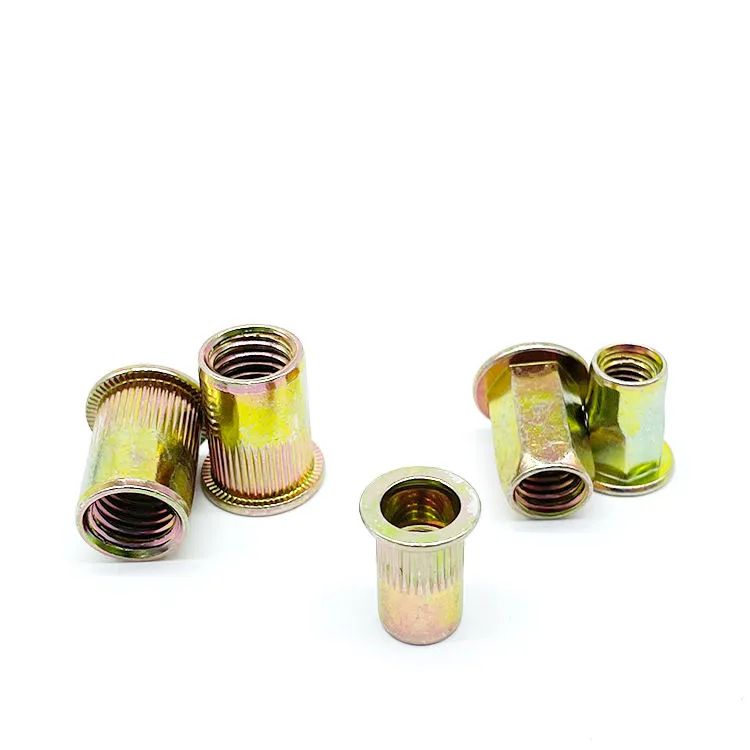

M10 Flange Nut Specifications and Applications in Mechanical Engineering Projects
Oct . 13, 2024 09:59 Back to list
M10 Flange Nut Specifications and Applications in Mechanical Engineering Projects
Understanding M10 Flange Nuts A Comprehensive Guide
When it comes to fastening materials in various construction and manufacturing projects, fasteners play a pivotal role in ensuring structural integrity and reliability. Among these fasteners, the M10 flange nut stands out due to its unique design and versatile applications. In this article, we will explore the characteristics, benefits, and uses of M10 flange nuts, as well as tips for proper installation and maintenance.
What is an M10 Flange Nut?
An M10 flange nut is a type of nut that has a wide, circular base, or flange, attached to its bottom. The M denotes that the nut is metric, and 10 indicates the nominal diameter of the nut's thread, which is 10 millimeters. The flange provides a larger surface area, which helps distribute loads more evenly and prevents the nut from loosening over time. This feature makes M10 flange nuts particularly useful in applications where vibrations are common.
Characteristics of M10 Flange Nuts
M10 flange nuts are typically made from various materials, including steel, stainless steel, and plastic. The choice of material often depends on the specific requirements of the project, including factors like strength, corrosion resistance, and environmental conditions.
1. Thread Design The M10 flange nut has a coarse pitch thread, which allows for easy threading onto corresponding M10 bolts or screws. The thread design contributes to a secure grip, ensuring that the bolt or screw maintains its position even under stress.
2. Flange Size The flange not only increases the surface area for load distribution but also serves as a built-in washer. This eliminates the need for separate washers in many applications, simplifying the assembly process.
3. Corrosion Resistance Many M10 flange nuts are available with protective coatings, such as zinc plating or anodizing, to enhance corrosion resistance. This is particularly important in outdoor applications or environments where exposure to moisture is a concern.
Benefits of Using M10 Flange Nuts
The M10 flange nut offers numerous advantages that make it a popular choice among engineers and DIY enthusiasts
flange nut m10

1. Enhanced Load Distribution The flange's larger surface area helps reduce pressure on the material being fastened, minimizing the risk of damage. This is particularly beneficial in softer materials that could deform under high stress.
2. Reduced Risk of Loosening Due to the flange's design, M10 flange nuts are less likely to loosen over time compared to standard nuts. This property is particularly useful in machinery and automotive applications, where vibrations are common.
3. Ease of Installation The integrated flange allows for quicker assembly, as there's no need to install separate washers. This can save time and effort in production environments, leading to increased efficiency.
Applications of M10 Flange Nuts
M10 flange nuts are widely used across various industries due to their reliability and versatility. Some common applications include
- Automotive Used in engine assemblies, undercarriages, and vehicle frames to secure components effectively. - Construction Employed in structural steelwork and frameworks to join elements securely, ensuring durability and stability. - Manufacturing Utilized in machinery and equipment to maintain component integrity under operational stresses.
Installation and Maintenance Tips
To ensure the optimal performance of M10 flange nuts, consider the following installation and maintenance tips
- Proper Torque Use a torque wrench to apply the right amount of torque when fastening. Over-tightening can damage the materials being joined, while under-tightening can lead to loosening. - Regular Inspection Periodically check the integrity of the flange nut, especially in high-vibration environments. Look for signs of wear, corrosion, or loosening. - Select the Right Material Choose the appropriate material for your specific environment to enhance durability and performance.
Conclusion
The M10 flange nut is a versatile and essential component in various applications, offering numerous benefits that enhance reliability and performance. By understanding its characteristics, advantages, and proper installation techniques, users can ensure successful fastening in their projects. As technology and materials continue to evolve, the M10 flange nut will undoubtedly remain a staple in engineering and construction, proving its worth time and time again.
Latest news
-
High-Strength Hot Dip Galvanized Bolts - Hebei Longze | Corrosion Resistance, Customization
NewsJul.30,2025
-
Hot Dip Galvanized Bolts-Hebei Longze|Corrosion Resistance&High Strength
NewsJul.30,2025
-
High-Strength Hot-Dip Galvanized Bolts-Hebei Longze|Corrosion Resistance&High Strength
NewsJul.30,2025
-
Hot Dip Galvanized Bolts-Hebei Longze|Corrosion Resistance&High Strength
NewsJul.30,2025
-
Hot Dip Galvanized Bolts - Hebei Longze | Corrosion Resistance, High Strength
NewsJul.30,2025
-
High-Strength Hot Dip Galvanized Bolts-Hebei Longze|Corrosion Resistance, Grade 8.8
NewsJul.30,2025

